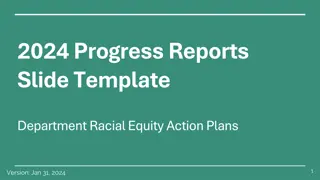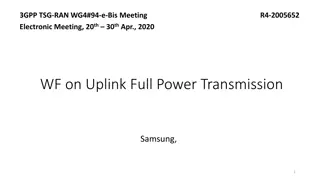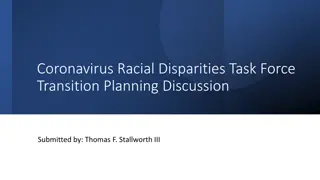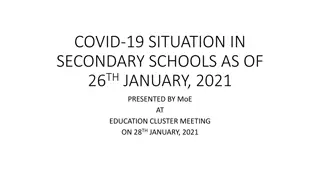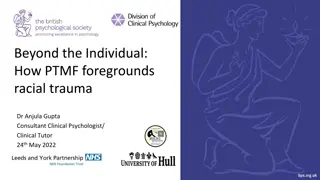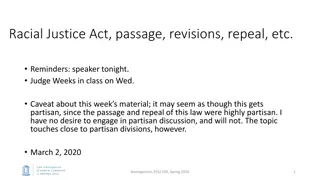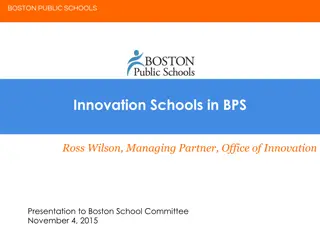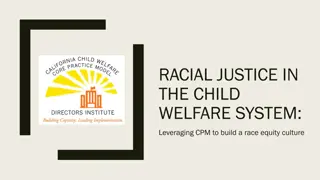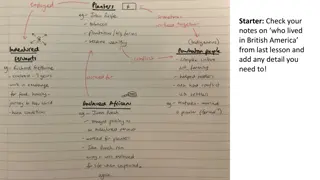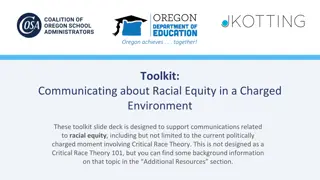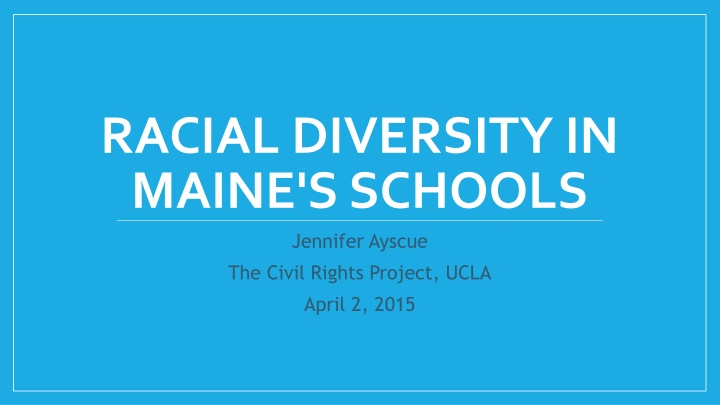
Racial Diversity Trends in Maine's Public Schools
Explore the importance of diversity in Maine's public schools, examining enrollment and segregation trends in cities like Portland and Lewiston. Discover the benefits of diversity and the harms of segregation, along with insights on planning for increasing diversity in educational settings.
Uploaded on | 0 Views
Download Presentation

Please find below an Image/Link to download the presentation.
The content on the website is provided AS IS for your information and personal use only. It may not be sold, licensed, or shared on other websites without obtaining consent from the author. If you encounter any issues during the download, it is possible that the publisher has removed the file from their server.
You are allowed to download the files provided on this website for personal or commercial use, subject to the condition that they are used lawfully. All files are the property of their respective owners.
The content on the website is provided AS IS for your information and personal use only. It may not be sold, licensed, or shared on other websites without obtaining consent from the author.
E N D
Presentation Transcript
RACIAL DIVERSITY IN MAINE'S SCHOOLS Jennifer Ayscue The Civil Rights Project, UCLA April 2, 2015
Overview Why does diversity matter? What are the enrollment and segregation trends in Maine s public schools? What are the trends in Portland and Lewiston? How can Maine plan for increasing diversity in schools?
WHY DOES DIVERSITY MATTER?
Benefits of Diversity Academic Social Long-term
Harms of Segregation Unequal opportunities Teachers Classmates Curriculum Unequal outcomes Academic performance Drop-out rates Success in college
Racial Transition Portland 2000: 2.6% black 2010: 7.1% black Lewiston 2000: 1.1% black 2010: 8.7% black Between 1980 and 2005, diverse areas in the nation s 50 largest metros were more likely to become predominantly nonwhite than to remain diverse 1 out of 5 suburban school districts in the 25 largest metro areas are experiencing rapid racial change
WHAT ARE THE TRENDS IN MAINE'S PUBLIC SCHOOLS?
Enrollment Total Enrollment Maine 1989-1990 1999-2000 2010-2011 2012-2013 Northeast 1989-1990 1999-2000 2010-2011 Nation 1989-1990 1999-2000 2010-2011 213,514 209,035 183,427 179,323 6,940,135 8,007,804 7,780,729 39,937,135 46,737,341 48,782,384
Enrollment by Race, Maine 1.5 1.1 0.8 0.4 0.5 3.1 0.7 1.8 White Black Asian 97.6 92.5 Latino Other 1989-1990 2010-2011
Very Few Minority Segregated Schools in Maine 0.8% of Maine s schools are majority minority No intensely segregated schools No apartheid schools
Racial Composition of Typical Students School, Maine, 2010-2011 2.8 1.2 3.8 1.3 100 3.1 2.6 1.4 2.8 4.6 4.9 2 1 80 3.8 13.7 7.9 1.5 60 93.3 87.6 83.6 40 77.1 20 0 White Student Black Student Latino Student Asian Student White Black Asian Latino Other
Double Segregation by Race and Poverty Less than of the students in Maine are low income More than of the students in majority minority schools are low income
Socioeconomic Composition of Typical Student s School, Maine, 2010-2011 60 % Low Income 50.5 50 46.2 45.7 45 42.6 White Exposure to Low Income Black Exposure to Low Income Latino Exposure to Low Income Asian Exposure to Low Income 40 30 20 10 0
Key Findings, Maine Decreasing enrollment size Increasing racial diversity Very few segregated schools Black students are most segregated Double segregation by race and poverty
WHAT ABOUT PORTLAND AND LEWISTON?
Enrollment by Race, Portland Metro, 2010-2011 1.7 1.9 2.3 3.3 White Black Latino Asian 90.8 Other
White Proportion in Metro Districts 1989 1999 2010 1989 1999 2010 YARMOUTH 98.6% 98.3% 94.2% GORHAM 98.7% 97.4% 96.3% CAPE ELIZABETH SOUTH PORTLAND 97.8% 98.1% 93.2% 96.9% 95.3% 84.6% RSU 15/ MSAD 15 SCARBOROUGH 99.5% 98.3% 94.7% 99.0% 98.0% 94.8% PORTLAND 90.5% 84.8% 64.8% FALMOUTH 98.3% 97.8% 93.7% WESTBROOK 97.4% 96.0% 86.2%
Enrollment by Race, Portland School District, 2012-2013 3.7 6.8 5.6 White Black Latino 22.7 61.2 Asian Other
Segregated Schools, Portland Public Schools 4 elementary schools are majority minority 3 elementary schools are more than 75% white
Key Findings, Portland Metro enrollment is increasing in size Metro is slightly more diverse than the state Portland Public Schools is substantially more diverse than the state and the metro 4 of the state s 5 majority minority schools are in Portland Public Schools
Enrollment by Race, Lewiston Public Schools, 2012-2013 2.8 1.1 2.5 White 29.2 Black Latino Asian 64.5 Other
Segregated Schools, Lewiston Public Schools 1 elementary school is majority minority 1 elementary school is almost majority minority 2 elementary schools are more than 75% white
Conclusions Racial diversity is increasing Current instances of segregation are modest and localized
HOW CAN MAINE PLAN FOR INCREASING DIVERSITY IN SCHOOLS?
Recommendations Include diversity goals in student assignment policies Work with housing agencies Adopt regional approaches Include civil rights standards with choice options Recruit, train, and hire diverse teaching staff Provide teacher training about diversity
THANK YOU www.civilrightsproject.ucla.edu Search for: Maine


